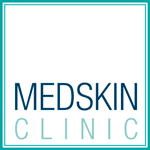FREE Consultation 0330 043 9943

Skin tag Removal Southend on Sea
Looking for Skin tag Removal in Southend on Sea
Skin Tag Removal Southend on Sea – At MedSkin Skin Tag Removal Southend on Sea Clinic, we prioritise the efficient treatment of various skin conditions such as moles, milia, and especially skin tags, which are known for disrupting comfort and impacting self-esteem. Conveniently situated for those in Southend on Sea, we offer an expert skin tag removal service designed to tackle these issues with precision.
Skin tags, commonly confused with warts, are usually harmless and not typically painful formations on the skin. While warts are infectious and can spread, skin tags require professional intervention for removal.
These small growths are often located on different body areas, including the neck, armpits, under the breasts, in the groin region, on eyelids, or even on the buttocks. Although not medically threatening, skin tags can suffer irritation from rubbing clothing or jewellery, and their appearance may cause embarrassment or a loss of self-confidence.
It’s useful to note that skin tags are characterised by their smooth and soft texture, dangling from the skin, as opposed to warts, which are coarse and sit flat against the skin. Furthermore, skin tags usually occur singly and aren’t contagious; conversely, warts can form clusters and are transmittable.
Milia comprise small, white keratin-filled bumps showing primarily on the face, such as around the eyes and nose. Mostly benign, they might still require removal if they persist.
Which Treatment Is Right for You?
Our Skin Tag Removal Southend on Sea Clinic takes pride in its assortment of robust treatments for the removal of milia, moles, and skin tags in a secure manner. We are committed to identifying the treatment approach that best suits each individual case.
A leading option we offer is the CryoPen treatment, an innovative, minimally invasive method utilising liquid nitrogen to freeze and remove skin lesions adeptly. Handled by our skilled professionals, the procedure involves deploying liquid nitrogen through a precision-tool, aimed exclusively at the lesion, causing it to be frozen and naturally shed after some time, all while preserving the surrounding healthy skin.
At Skin Tag Removal Southend on Sea, our service goes beyond just treatments; we offer comprehensive support and advice throughout your skincare journey. Our team of experts is dedicated to providing care that is personal, reassuring, and constructed around your unique requirements.
Identifying the appropriate treatment is crucial, and we are available to address any queries regarding our skin tag removal services in Southend on Sea. Whether it involves removing a bothersome skin tag, addressing milia, or having a mole evaluated and taken out, we place a high priority on your health, safety, and contentment.
Your wellbeing, comfort, and fulfilment are our main concerns at the Skin Tag Removal Southend on Sea Clinic.
Should you require further information or wish to schedule a consultation, do not hesitate to contact us by telephone or via our online enquiry form. A member of our Skin Tag Removal Southend on Sea nursing team will be in contact promptly.
Fill this Form to connect via SMS
What does Skin Tag Removal Treatment Involve?
What is a Skin Tag
A skin tag is a small, soft piece of skin that sticks out on a thin stalk. They’re common and harmless and can appear anywhere on the body. People often find them on the neck, underarms, around the groin, or under the breasts. Skin tags are made of loose collagen fibers and blood vessels surrounded by skin. They’re more common in older adults, people with certain health conditions, or those who are overweight. Skin tags don’t usually cause pain or discomfort, but they can be annoying. If someone doesn’t like how a skin tag looks or if it’s irritating, all skin tags can easily be removed.

Skin Tag Removal Southend on Sea Questions

What exactly are skin tags, and how do they form?
Skin tags are diminutive, non-cancerous protrusions that frequently emerge on parts of the body where skin comes into contact with other skin or clothes. They are usually without pain and not harmful, though at times they may lead to irritation or unease if they snag on clothing or Jewellery.
When is it advised to remove skin tags?
The recommendation for removing skin tags often arises for aesthetic reasons or if the tags lead to discomfort because of their position or size. Although skin tags are typically benign, their removal might be deemed necessary if they become irritated, start to bleed, or if there’s concern they might indicate a more grave health issue.
There could be many reasons why you’d want to remove a cyst. Common reasons may include disliking its appearance, experiencing discomfort due to its size or location (such as when brushing your hair, wearing certain clothes or Jewellery, or shaving), inflammation, the sudden growth of the cyst, its tenderness or itchiness, or if it has burst, leaked, developed an abscess. As they grow larger, cysts are likelier to rupture and cause discomfort, making earlier removal when they’re smaller much simpler.
What are the various techniques for removing skin tags?
Excision
Excision is the process of removing the skin tag using a scalpel or scissors after applying a local anaesthetic to numb the area. This technique is particularly effective for removing larger skin tags or those in delicate areas.
Cryotherapy
Cryotherapy entails the application of liquid nitrogen to freeze the skin tag, leading it to detach over time. Suitable for smaller skin tags, this approach might necessitate several sessions to achieve full removal.
Ligation
Ligation involves constricting the base of the skin tag with a piece of thread or suture, thus halting its blood flow and causing it to eventually drop off. While less frequently employed, this technique can be effective for larger tags.
What can patients anticipate during a skin tag removal process?
Consultation
Prior to the procedure, patients will undergo a consultation with their healthcare practitioner to discuss the most suitable method for removal, along with any potential risks or complications that may arise.
Procedure
Throughout the procedure, the surrounding area of the skin tag will be cleansed, and local anaesthetic might be administered to desensitise the area. Subsequently, the chosen method for removing the skin tag will be conducted, leading to the removal of the skin tag.
Aftercare
Following the procedure, it’s common for patients to experience slight discomfort or redness at the site of removal. You will receive instructions to maintain the area clean and dry and to refrain from touching or aggravating the area.
While removing skin tags is predominantly safe, several risks and potential complications should be considered, such as:
Bleeding: There can be some bleeding during or following the procedure, notably with methods like excision.
Infection: The area where the skin tag was removed is at risk of infection, especially if the aftercare guidelines are not adhered to properly.
Scarring: There is a possibility of scarring at the site of removal, particularly with techniques such as excision or if the site is not cared for appropriately after the procedure.
The time it takes to recover after having a skin tag removed can differ based on the removal technique used and the individual’s capacity for healing. Typically, most patients may find that the area will heal in anything from a few days to a couple of weeks. Adhering to any aftercare guidance given by the healthcare professional is crucial to ensure a smooth healing process and to reduce the likelihood of any complications.
The removal of skin tags is a routine and generally straightforward procedure that can enhance both physical comfort and self-esteem. By gaining knowledge about the various methods of removal, understanding potential risks, and comprehending the aftercare necessities, patients can make informed choices regarding their skin health and welfare. If you have any issues about skin tags or if you’re contemplating having them removed, it’s advisable to seek tailored advice and treatment options from your healthcare provider.
We also offer Wart Removal

Book your free consultation now
We provide FREE, no-obligation consultations at our clinics to discuss your goals and to explore your treatment options.
